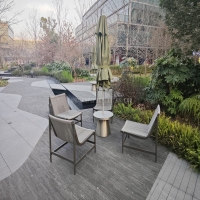Welcome to the website for landscape facilities products and knowledge.
How does the table’s design account for varying levels of user multilingual needs?
In today's interconnected digital landscape, table design must accommodate diverse linguistic requirements through sophisticated architectural approaches. Modern implementations utilize dynamic column sizing that automatically adjusts for character density variations between languages like compact Japanese and expansive German. Advanced frameworks incorporate semantic HTML structures with lang attributes that enable proper screen reader interpretation and bidirectional text support for languages such as Arabic and Hebrew.
Progressive enhancement strategies allow tables to maintain functionality while loading appropriate character sets and formatting rules. The most effective designs implement expandable cell containers with vertical growth capabilities to handle text expansion up to 300% without breaking layouts. Smart algorithms detect script complexity and adjust line-height ratios accordingly, while maintaining consistent information density across translations.
Cultural considerations extend beyond mere translation through contextual adaptation of numerical formats, date structures, and sorting behaviors. Eastern language implementations often incorporate vertical text flow options, whereas Latin-based languages benefit from intelligent hyphenation systems. Color symbolism and iconography undergo systematic localization to ensure cultural appropriateness across user segments.
The architecture separates content from presentation through modular CSS systems that apply region-specific typography stacks and spacing tokens. This compartmentalization enables rapid deployment of new language versions while maintaining brand consistency. Performance optimization includes subsetted fonts and lazy-loaded translation assets that reduce initial payload while ensuring full linguistic capability.
Accessibility remains paramount with comprehensive ARIA label systems that announce header relationships in screen readers, coupled with keyboard navigation patterns optimized for different reading directions. These multilayered solutions demonstrate how thoughtful table design transcends mere translation to create genuinely inclusive data experiences for global audiences.
Related search:

Recommendation
Metal structure rattan chair without armrests for single person, with woven seat and backrest.